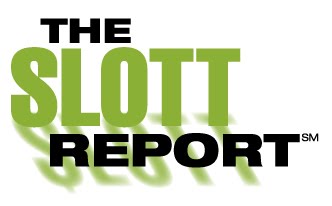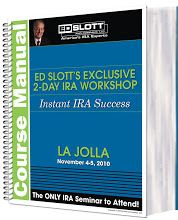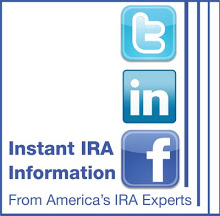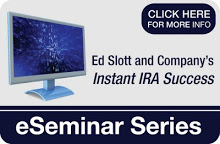This week, the Ed Slott and Company IRA Discussion Forum featured a question about leaving an IRA to a minor beneficiary. Is this a potential part of your planning? If so, you’ll need to carefully evaluate your options. What are they? Read on to find out two of the best.
There are a number of effective options for naming an IRA beneficiary if you plan to leave your IRA to a minor. One option is to name a custodial account (UGMA/UTMA), for the benefit of the minor as the IRA beneficiary. For example, your beneficiary form might read “John Doe as Custodian for James Doe under the Uniform Gifts to Minors Act.” This strategy has several benefits. One benefit is that it won’t cost you anything to set up. In fact, the actual custodial account would likely not be set up until after you’ve passed. For IRAs with smaller balances, this may be a preferable option. Another benefit of using an UGMA/UTMA account as an IRA beneficiary for minors is that until the beneficiary reaches the age of majority, the account’s custodian has control over the funds. The age of majority varies from state to state between 18 and 21.
The major drawback of leaving your IRA to an UGMA/UTMA account is that once the beneficiaries reach the age of majority, the money is theirs and they can do whatever they want with it. While you can make your wishes known to those beneficiaries before your death, there is nothing to force them to adhere to those desires. That could mean your 18 year-old beneficiary now has access to thousands, or in some cases, even millions of dollars - perhaps not what you had in mind?
If the idea of an 18 (or 21) year-old suddenly having access to all of your IRA money leaves you a bit uneasy, there’s another strategy that can be used. Instead of naming an UGMA/UTMA account as the IRA’s beneficiary, you can name a trust. The biggest benefit of naming an IRA trust as the beneficiary of your IRA is that it allows you to have maximum control over what happens to those funds - even after your dead. In essence, a trust as an IRA beneficiary allows you to rule from the grave. In contrast to an UGMA/UTMA account, there is no age where the trust beneficiaries must be given control over the IRA funds. Plus, a trust allows you to write your own rules.
There are a number of downsides to the trust approach though. Besides the cost of setting up a trust (which could run several thousand dollars or more) the trust may also limit the beneficiaries’ ability to “stretch” distributions over their lives. In general, only individuals (people) can stretch distributions, but there are special trusts, known as see-through (a.k.a. look-through) trusts that also allow for the stretch provision. Unfortunately though, all applicable beneficiaries of an IRA trust must use the oldest beneficiary’s age for determining required distributions. That means that if you have one beneficiary who is 40 (i.e. your child) and another who is 7 (i.e. your grandchild), if they are both beneficiaries of the same IRA trust, the 7 year-old is still stuck using the 40 year-olds life expectancy. Another downside to naming a trust as an IRA beneficiary is that depending on the type of trust that’s set up, distributions from the IRA could end up being taxed at trust tax rates instead of individual rates. That can have a MAJOR impact of the ultimate value of the IRA received by your beneficiaries.
Regardless of which of the above strategies makes sense in your particular situation, there is one important thing to remember - after you have died, THE IRA IS NOT moved into the UGMA/UTMA or Trust account. If that mistake is made, the entire IRA is immediately taxable and the mistake cannot be fixed. Instead, only the distributions from the IRA are directed into the accounts.
Sound confusing? Well, it should. Deciding how to leave IRA money to a minor beneficiary is not easy decision. If naming such a beneficiary may be a part of your plan, consider speaking with a qualified advisor who has specialized knowledge in this area.
Got more questions?? Want to see what other people are asking? Check out the Ed Slott and Company IRA Discussion Forum.
By IRA Technical Consultant Jeffrey Levine and Jared Trexler
------------------------------------------------------------------------------
Comment, Question, Discussion Topic on your mind? Click on the Blue Comment Link below and leave your thoughts then check back to see what other consumers and advisors think.
*Copyright 2010 Ed Slott and Company, LLC
Monday, August 23, 2010
Q of Week: Leaving IRA to a Minor
Quality content
- Siti Non Aams
- Nuovi Siti Casino
- Casino Non Aams Italia
- Casinos Not On Gamstop
- Casino Sites Not On Gamstop
- Online Casino
- UK Casino Not On Gamstop
- Sites Not On Gamstop
- Casino En Ligne
- Casino En Ligne Fiable
- Casinos Not On Gamstop
- UK Casino Not On Gamstop
- Casino Sites Not On Gamstop
- Non Gamstop Casinos UK
- Casino Online Non Aams
- Casino Not On Gamstop
- Meilleur Casino En Ligne France
- Casino Sites Not On Gamstop
- Non Gamstop Casino Sites UK
- Casino Sites UK Not On Gamstop
- UK Casino Not On Gamstop
- Meilleur Casino En Ligne Fiable
- Casino Online Non Aams
- Casino Non Aams
- Casino Sites Not On Gamstop
- Meilleur Casino En Ligne Belgique
- Lista Casino Online Non Aams
- 안전한 파워볼사이트
- Meilleur Casino En Ligne 2026
- Meilleur Casino En Ligne 2026
- Meilleur Casino En Ligne
Subscribe to:
Post Comments (Atom)
















1 comments:
Question: Can I turn an unintended distribution into a Roth Conversion? A 40 yr old client's advisor closed up shop and rather than issuing full IRA account value as a rollover, sent him a check as a distribution with tax withheld. If we deposit that sum into a Roth IRA before 60 days, can we call it a Roth Conversion, with exception (so he doesn't pay 10% penalty?) Thanks. A subscriber, and new advisor to client.
Post a Comment